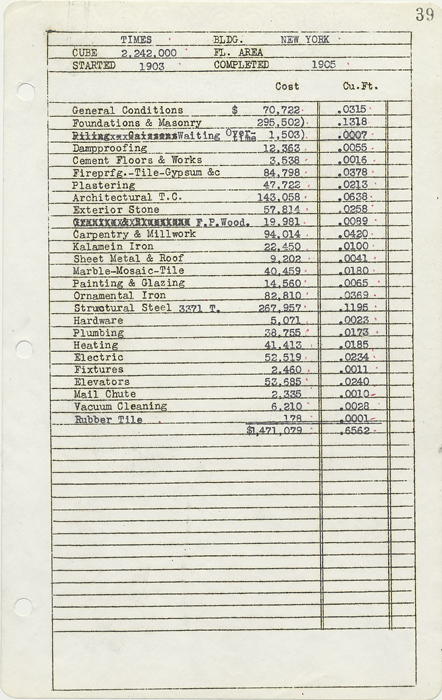The Skyscraper Museum is devoted to the study of high-rise building, past, present, and future. The Museum explores tall buildings as objects of design, products of technology, sites of construction, investments in real estate, and places of work and residence. This site will look better in a browser that supports web standards, but it is accessible to any browser or Internet device.
Stone & Steel
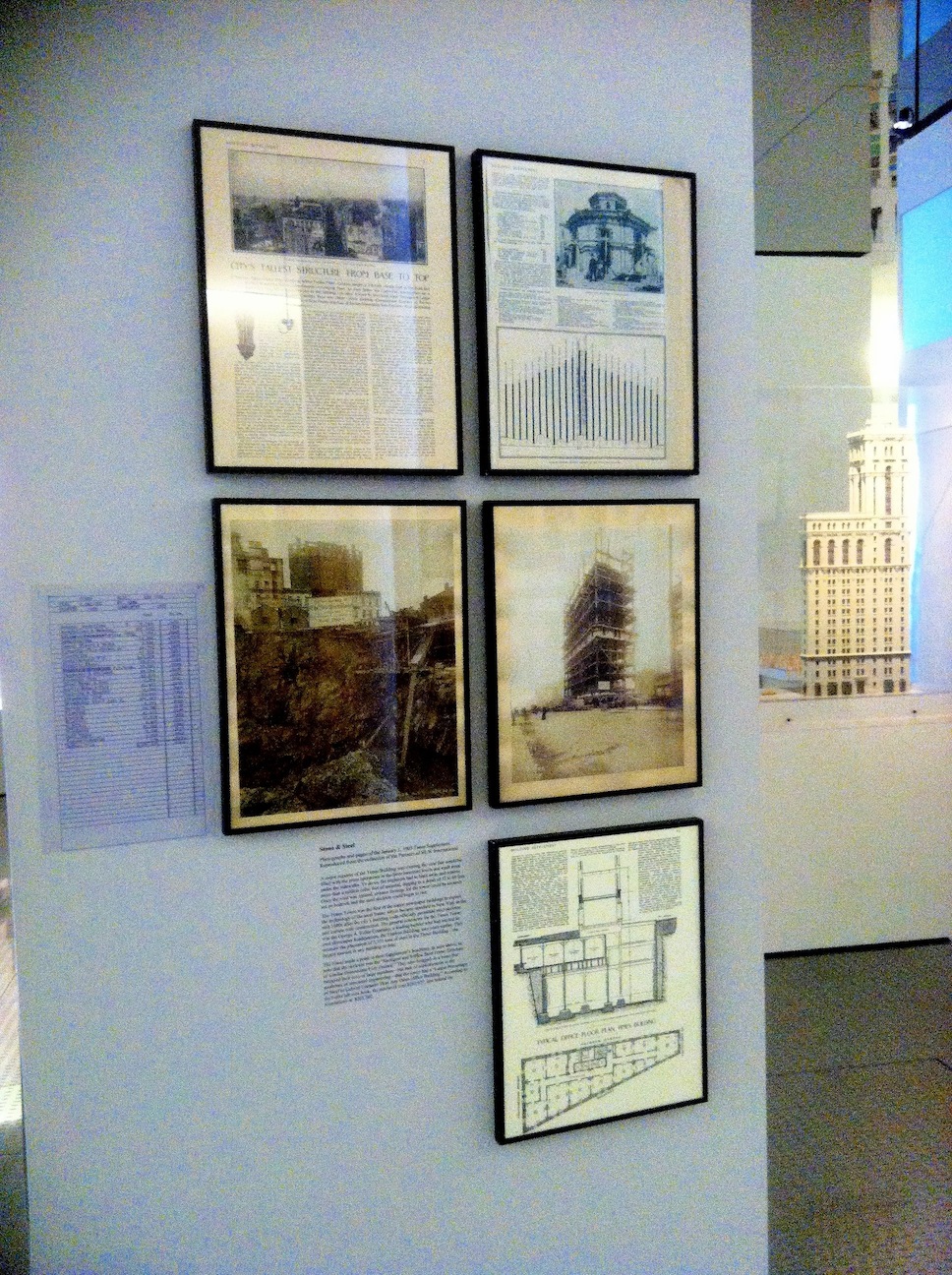
Photographs and pages of the January 1, 1905 Times Supplement. Reproduced from the collection of the Partners of HLW International
A major expense of the Times Building was creating the void that would be filled with press operations in the three basement levels and vault areas under the sidewalks. To do so, the engineers had to blast away and remove more than a million cubic feet of material, digging to a depth of 55 to 60 feet. Once the void was created, column footings for the tower could be securely set on bedrock and the steel skeleton could begin to rise.
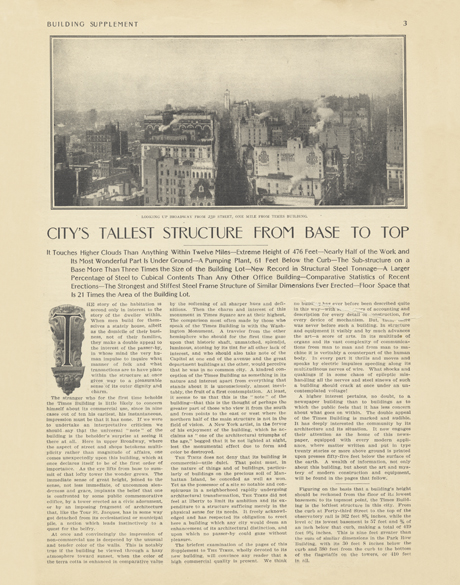
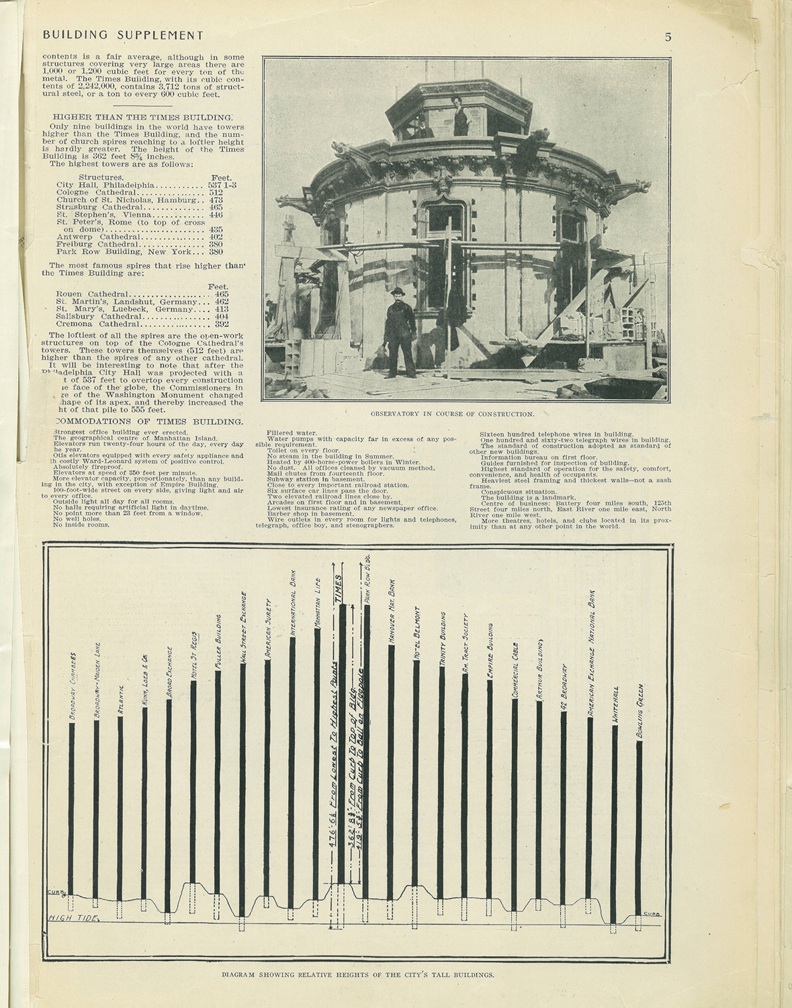
The Times made a point in their Supplement's headlines, as seen above, to note that the skeleton was the "Strongest and Stiffest Steel Frame Structure of Similar Dimensions Ever Erected." They also bragged-in a boast that betrayed their love of large numbers-but lack of sophistication in the aesthetics of structural engineering--that the tower had a "Larger Percentage of Steel to Cubical Contents Than Any Other Office Building." According to the Fuller job cost book, the steelwork cost $267,957, just behind the foundations at $295,502.
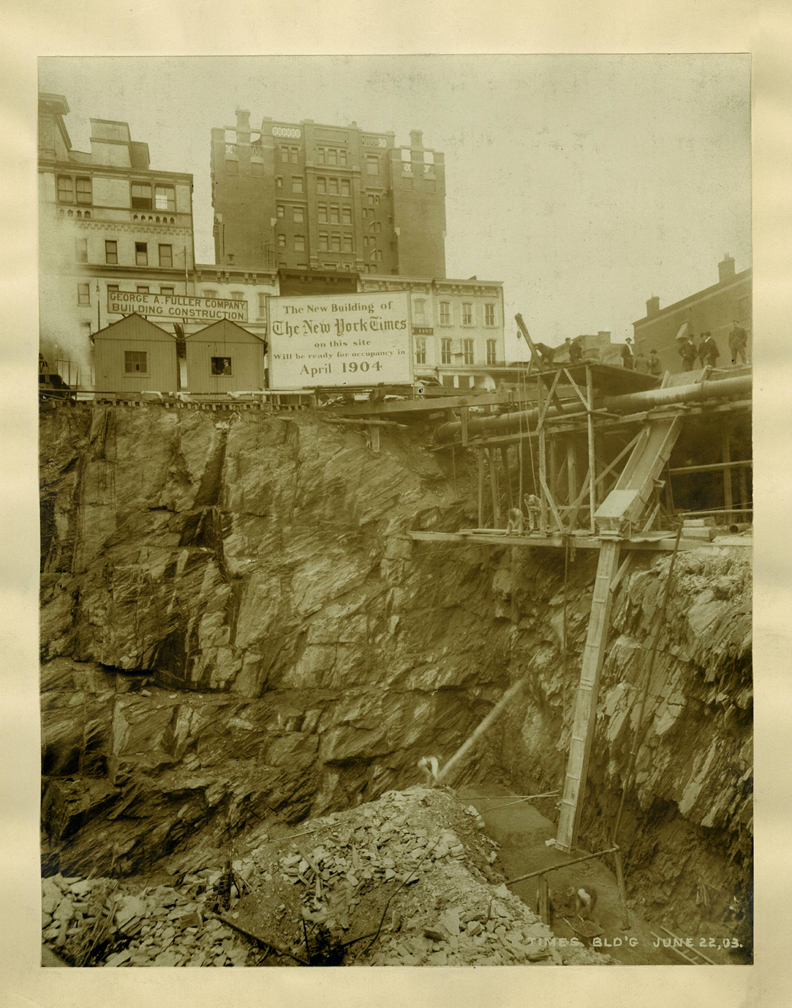
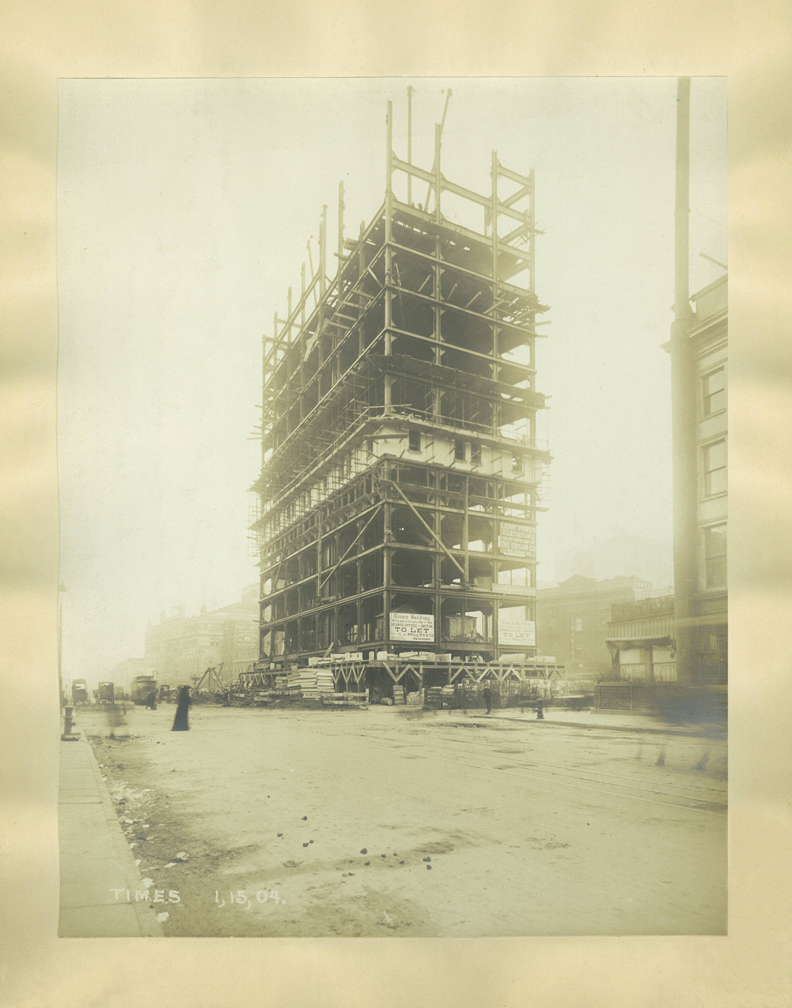
The enormous expense of the tower--the costs of which rose from the initial estimate of $1.1 million to $1.7 or $2.5 million, depending on the source--was an extravagance that Ochs rationalized in two ways: as an advertisement of the success of the newspaper, and as an act of civic largesse. In the Times January 1, 1905 Supplement on the new building the editors wrote:
"The Times did not feel at liberty to limit its ambition and its expenditure to a structure sufficing merely in the physical sense for its needs. It freely acknowledged and has respected its obligation to erect here a building which any city would deem an enhancement of its architectural distinction, and upon which no passer-by could gaze without pleasure."
